In the intricate world of international trade, the Harmonized System (HS) Code stands out as a universal language for categorizing goods transported across borders. Developed by the World Customs Organization (WCO), the HS Code system is a standardized numerical method of classifying traded products. This guide delves into the significance, structure, and application of HS Codes in customs, providing essential insights for businesses and individuals engaged in international commerce.
The Essence of HS Codes
HS Codes, short for Harmonized Commodity Description and Coding System codes, are essential in facilitating global trade. The system stratifies importing and exporting by assigning a unique code to every conceivable product by ensuring customs authorities, traders, and logistics providers speak a common language. This not only simplifies the declaration process but also helps in determining tariffs, gathering statistics, and ensuring compliance with regulations.
Structure of HS Codes
An HS Code is composed of six digits, structured in a specific way to reflect the category of the goods. Here’s a breakdown:
- The first two digits identify the chapter the goods are classified in, which represents a broad category of products (e.g., 09 for Coffee, Tea, Mate, and Spices).
- The following two digits specify the heading within that chapter, narrowing down the category (e.g., 0902 for Tea).
- The final two digits further refine the classification, pointing to the sub-heading, which is the specific item (e.g., 090240 for Green Tea (not fermented)).
Countries may extend HS Codes with additional digits to further detail the items according to national requirements, leading to codes up to 10 digits long for tariff and statistical purposes.
The Significance of HS Codes in Customs
HS Codes serve several crucial roles in international trade, including:
- Tariff Determination: They are vital in identifying the applicable tariffs on goods, helping traders understand the duties they need to pay.
- Trade Compliance: By accurately classifying goods, traders ensure compliance with local laws and regulations, avoiding costly penalties.
- Efficient Customs Clearance: Correct HS Codes speed up the customs clearance process, reducing delays and potential costs associated with storage and demurrage.
- Statistical Tracking: Governments and international bodies use HS Codes to monitor and manage trade flows, aiding in policy-making and economic planning.
Navigating HS Code Classification
Classifying goods under the correct HS Code can be challenging, given the system’s complexity and the vast array of products it covers. Here are some tips for accurate classification:
- Use the HS Code Explanatory Notes: The WCO publishes detailed notes that guide product classification.
- Consult with Customs or a Trade Specialist: When in doubt, seeking advice from customs authorities or a professional specializing in trade and customs can ensure clarity.
- Leverage Online Tools and Databases: Many countries offer online tariff databases where traders can search for HS Codes applicable to their products.
AI’s Role in HS Code Classification
The complexity of the HS Code system, combined with the vast and varied nature of goods traded internationally, presents significant challenges in classification. Misclassification can lead to incorrect tariff applications, delays in customs clearance, and potential legal issues. This is where AI comes into play, offering solutions to enhance the precision and efficiency of HS Code assignments.
Automated Classification Systems
AI-powered tools can now automatically classify products into their correct HS Code categories. By analyzing product descriptions, images, and other relevant data, these systems can match goods with their appropriate codes, reducing human error and increasing the speed of customs processing.
Enhanced Compliance and Reduced Delays
AI algorithms are trained to understand the nuances of the HS Code system and can keep up-to-date with tariff laws and regulations changes. This ensures that businesses remain compliant with international trade laws, minimizing the risk of penalties and facilitating smoother customs clearance.
Predictive Analysis for Trade Trends
Beyond classification, AI leverages HS Code data to perform predictive analysis, helping businesses and customs authorities anticipate trade trends, understand the impact of regulatory changes, and make informed decisions. This strategic insight is invaluable for optimizing supply chains and preparing for market shifts.
The Future of HS Codes and AI in Customs
The integration of AI with HS Code classification is just the beginning. Future advancements may include:
- Enhanced Machine Learning Models: As AI systems are fed more data, their ability to accurately classify goods will improve, reducing the need for manual intervention.
- Blockchain for Secure Trade Data: Combining AI with blockchain technology could offer secure, immutable records of HS Code classifications and customs entries, enhancing transparency and trust in international trade.
- Global Trade Facilitation Platforms: AI could power global platforms that automate and harmonize customs procedures, making international trade more accessible and efficient for businesses of all sizes.




